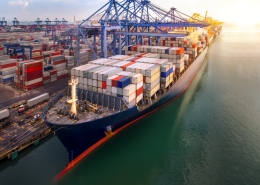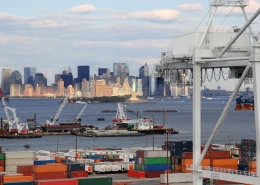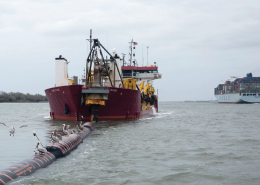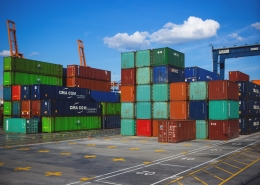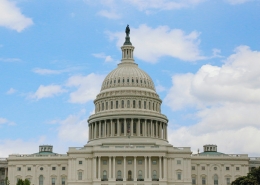Recent updates from the National Transit Database maintained by the Federal Transit Administration shows that total mass transit farebox revenues in reporting year 2022 were still 44 percent below the last pre-COVID year of 2019. However, there are modal differences, and one big regional difference.
Overall, total fares in 2022 were $8.94 billion, down $7.13 billion from the 2019 total of $16.07 billion. The failure of mass transit ridership to return to pre-COVID levels, which in turn prevents farebox revenues from returning to pre-COVID levels, is pushing many transit providers to the edge of a “fiscal cliff” as they scramble to replace their share of that $7 billion per year in missing revenues, as Eno has mentioned in several different articles and webinars to date.
Bear in mind that this is farebox money, not ridership. While the ridership level is one of the two determinants of farebox receipts, the other determinant is the fare level, and there is wide variety on that. For example, Los Angeles Metro, during a part of this time period, was still running its experiment in giving away free bus rides, making comparisons between its farebox receipts and other providers much less useless (and also making ridership estimates impossible).
New York City is different
No matter the mode, the NTD reporting shows that transit demand in the New York City area has recuperated much better than has the rest of the country. In millions of dollars:
|
|
RY 2019 |
RY 2022 |
Decrease |
| Total fares, all modes |
$16,069.9 |
$8,937.8 |
-$7,132.1 |
-44.4% |
|
|
|
|
|
|
| NYC-area Heavy Rail |
$3,868.3 |
$2,451.8 |
-$1,416.5 |
-36.6% |
| All other U.S. Heavy Rail |
$1,808.0 |
$677.9 |
-$1,130.1 |
-62.5% |
|
|
|
|
|
|
| NYC-area Commuter Rail |
$2,092.2 |
$1,183.6 |
-$908.6 |
-43.4% |
| All other U.S. Commuter Rail |
$1,212.9 |
$434.8 |
-$778.1 |
-64.2% |
|
|
|
|
|
|
| NYC-area Motorbus |
$1,446.5 |
$958.4 |
-$488.1 |
-33.7% |
| All other U.S. Motorbus |
$3,425.0 |
$1,834.4 |
-$1,590.6 |
-46.4% |
The Big Apple had the lion’s share of heavy rail and commuter rail traffic to begin with, and according to the NTD reporting, they were doing measurably better in 2022 than the rest of the country on farebox recuperation. Even on bus traffic, where demand never sagged during COVID as badly as it did for rail, the NYC area’s rebound is measurably more substantial than the rest of the U.S.
However, a small part of that may be the NTD’s reporting techniques. According to section 1.3 of the NTD user guide, transit agencies self-report their annual statistics four months after the ending date of their own fiscal year, and there is no nationwide uniformity of fiscal years. In particular, the New York MTA uses a January 1 to December 31 fiscal year, while most municipal governments and their agencies either use a July 1 to June 30 fiscal year or an October 1 to September 30 fiscal year. This means that all of New York City’s NTD statistics for a recent year are three to six months more removed from the effects of COVID than are most other transit agencies. For example, Reporting Year 2022 in the NTD is January 1, 2022 to December 31, 2022 for the New York MTA but the same NTD year is July 1, 2021 to June 30, 2022 for Los Angeles Metro, Philadelphia SEPTA, Boston MBTA, and others.
With that in mind, we can look at modes.
Variety by mode and city
When it comes to heavy (capacity) rail, there are a lot of regional differences. The NYC subway was only down 36 percent from pre-COVID levels, but the next two highest farebox systems, the DC-area WMATA and San Francisco BART, were still down around 70 percent, due to extenuating circumstances in those two areas. (DC had a combination of self-inflicted equipment shortages keeping ridership down, and public employee unions able to keep federal offices mostly empty, while San Fran, as Tech World HQ, shifted more to work-from-home than any other city.)
| Heavy Rail Systems: |
RY 2019 |
RY 2022 |
Decrease |
| NY |
MTA NYC Transit |
$3,643.2 |
$2,326.8 |
-$1,316.4 |
-36.1% |
| multi |
DC-area WMATA |
$533.5 |
$161.6 |
-$371.9 |
-69.7% |
| CA |
San Fran. BART |
$469.9 |
$130.2 |
-$339.6 |
-72.3% |
| IL |
Chicago CTA |
$309.5 |
$137.1 |
-$172.4 |
-55.7% |
| MA |
Boston MBTA |
$224.4 |
$125.1 |
-$99.3 |
-44.2% |
| multi |
NYC PATH |
$197.8 |
$113.5 |
-$84.3 |
-42.6% |
| PA |
Philadelphia SEPTA |
$113.2 |
$53.6 |
-$59.6 |
-52.6% |
| GA |
Atlanta-area MARTA |
$77.0 |
$35.9 |
-$41.2 |
-53.4% |
| CA |
L.A. Metro |
$31.4 |
$7.2 |
-$24.3 |
-77.2% |
| NY |
NYC Port Authority Transit |
$27.2 |
$11.5 |
-$15.8 |
-57.8% |
| All Other Heavy Rail |
$49.0 |
$27.2 |
-$21.8 |
-44.5% |
| U.S. Heavy Rail Total |
$5,676.3 |
$3,129.7 |
-$2,546.6 |
-44.9% |
As a mode, commuter rail is the slowest to recover, since it was the most focused on moving people from outer suburbs to downtown urban core jobs. Nationally, its receipts were still down 51 percent in 2022 versus pre-COVID. But those totals reflect the degree to which the NYC-area commuter rail lines (Long Island RR, Metro North, NJ Transit) dominate the national statistics, and they have recovered 5o to 60 percent of their pre-COVID farebox revenues. Elsewhere, the situation is much more grim – in the Chicago area, Metra farebox receipts in 2022 were still down 81 percent from 2019. In California, both NoCal (Caltrain) and SoCal (Metrolink) fares are still down two-thirds from 2019.
| Commuter Rail Systems: |
RY 2019 |
RY 2022 |
Decrease |
| NY |
MTA Long Island RR |
$768.9 |
$457.6 |
-$311.3 |
-40.5% |
| NY |
MTA Metro-North |
$756.7 |
$448.2 |
-$308.5 |
-40.8% |
| NJ |
New Jersey Transit |
$566.6 |
$277.8 |
-$288.8 |
-51.0% |
| IL |
Metra |
$365.9 |
$70.0 |
-$295.9 |
-80.9% |
| MA |
Boston MBTA |
$238.6 |
$80.7 |
-$157.9 |
-66.2% |
| PA |
SEPTA |
$141.4 |
$56.4 |
-$85.0 |
-60.1% |
| CA |
Bay Area Caltrain |
$102.7 |
$33.2 |
-$69.4 |
-67.6% |
| CA |
L.A.-Area Metrolink |
$85.2 |
$28.2 |
-$57.0 |
-66.9% |
| MD |
Baltimore-Area MTA |
$50.0 |
$13.8 |
-$36.2 |
-72.3% |
| VA |
Virgina Railway Express |
$42.0 |
$10.5 |
-$31.5 |
-75.0% |
| All Other Commuter Rail |
$187.2 |
$141.9 |
-$45.3 |
-24.2% |
| U.S. Commuter Rail Total |
$3,305.1 |
$1,618.3 |
-$1,686.8 |
-51.0% |
Motorbus transit is, by far, the most widely distributed nationwide, and was also the mode that kept the largest ridership share even during peak COVID (because, in many areas, that’s how the “essential employees” got to work while the white-collar workers who normally rode the rails were sheltering at home).
Nationwide, bus fare receipts in reporting year 2022 were 42.7 percent below 2019, and not that far behind the New York City area bus agencies. Bus fare receipts in Los Angeles were down almost 75 percent, but as noted above, L.A. Metro was giving away all its bus rides for free during the first half of reporting year 2022.
| Motorbus Systems: |
RY 2019 |
RY 2022 |
Decrease |
| NY |
MTA NYC Transit |
$846.1 |
$552.0 |
-$294.1 |
-34.8% |
| NJ |
New Jersey Transit |
$375.6 |
$243.0 |
-$132.6 |
-35.3% |
| IL |
Chicago CTA |
$279.2 |
$157.1 |
-$122.1 |
-43.7% |
| NY |
MTA Bus Company |
$224.8 |
$163.4 |
-$61.4 |
-27.3% |
| CA |
L.A. Metro |
$182.0 |
$46.0 |
-$136.0 |
-74.7% |
| PA |
Philadelphia SEPTA |
$168.0 |
$101.5 |
-$66.5 |
-39.6% |
| WA |
King County |
$141.8 |
$56.6 |
-$85.3 |
-60.1% |
| multi |
DC-area WMATA |
$120.3 |
$46.5 |
-$73.8 |
-61.3% |
| MA |
Boston MBTA |
$96.5 |
$55.1 |
-$41.4 |
-42.9% |
| CA |
San Fran. Muni |
$87.3 |
$27.2 |
-$60.1 |
-68.9% |
| All Other Motorbus |
$2,349.8 |
$1,344.3 |
-$1,005.4 |
-42.8% |
| U.S. Motorbus Total |
$4,871.5 |
$2,792.8 |
-$2,078.7 |
-42.7% |
We also looked up the fare receipts from the top ten light rail systems, before realizing what an afterthought those were in terms of fare recovery.
| Light Rail Systems: |
RY 2019 |
RY 2022 |
Decrease |
| MA |
Boston MBTA |
$81.7 |
$47.1 |
-$34.6 |
-42.4% |
| PR |
Portland Tri-Met |
$45.6 |
$19.2 |
-$26.5 |
-58.0% |
| WA |
Seattle-area Sound Transit |
$43.3 |
$29.4 |
-$13.9 |
-32.1% |
| CA |
L.A. Metro |
$43.0 |
$8.7 |
-$34.3 |
-79.7% |
| CA |
San Diego Metro |
$42.0 |
$25.5 |
-$16.5 |
-39.2% |
| CA |
San Fran Muni |
$39.3 |
$7.0 |
-$32.3 |
-82.2% |
| CO |
Denver RTD |
$38.3 |
$16.6 |
-$21.7 |
-56.6% |
| MN |
Twin Cities Metro Transit |
$27.2 |
$10.9 |
-$16.3 |
-59.8% |
| TX |
Dallas DART |
$23.3 |
$13.4 |
-$9.9 |
-42.5% |
| UT |
Utah Transit |
$17.6 |
$10.6 |
-$7.0 |
-39.7% |
| All Other Light Rail |
$145.8 |
$79.9 |
-$65.9 |
-45.2% |
| U.S. Light Rail Total |
$547.2 |
$268.3 |
-$278.8 |
-51.0% |
We will have more analysis of 2022 ridership and other data in the coming weeks.



